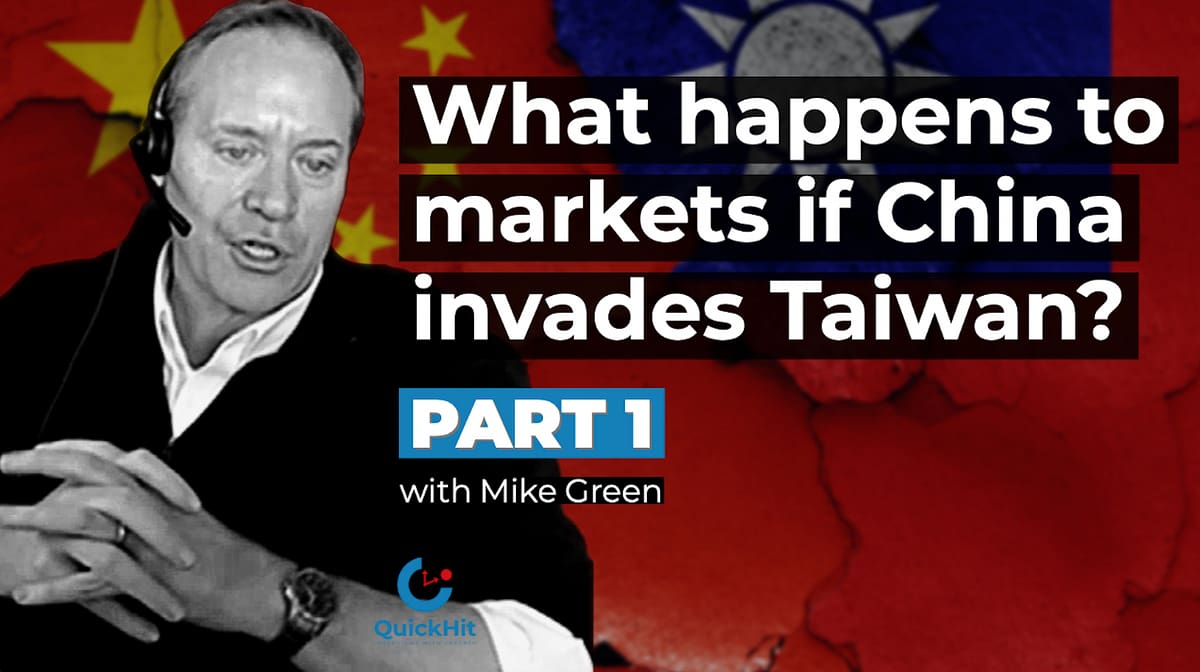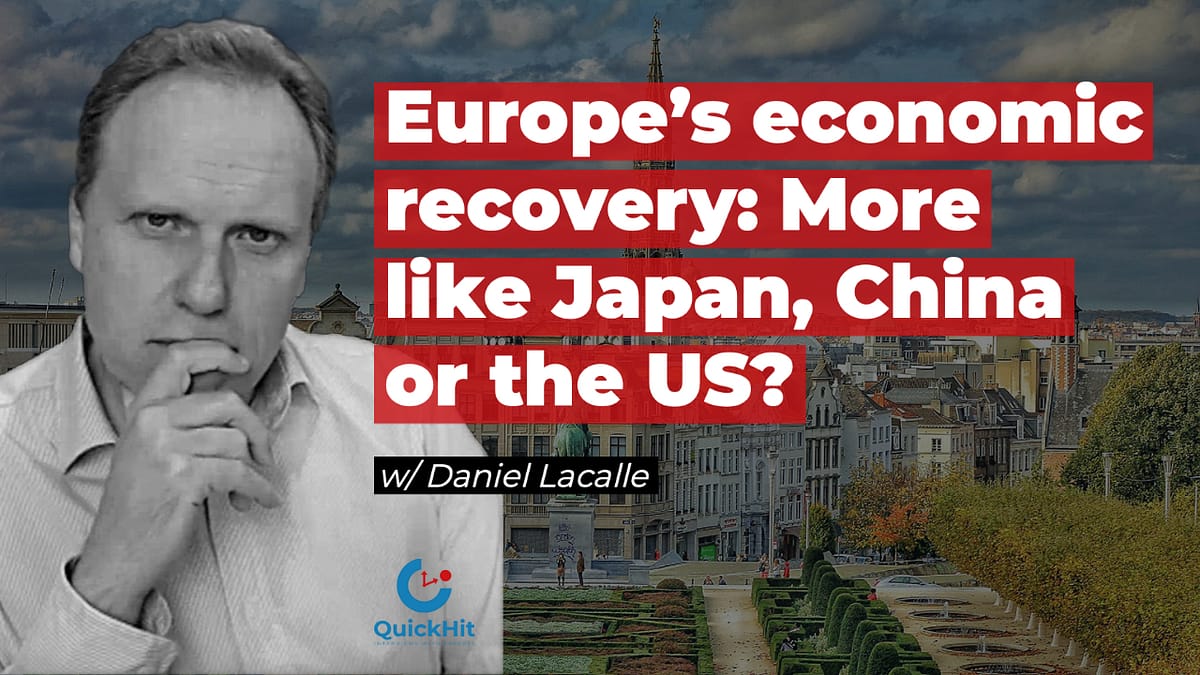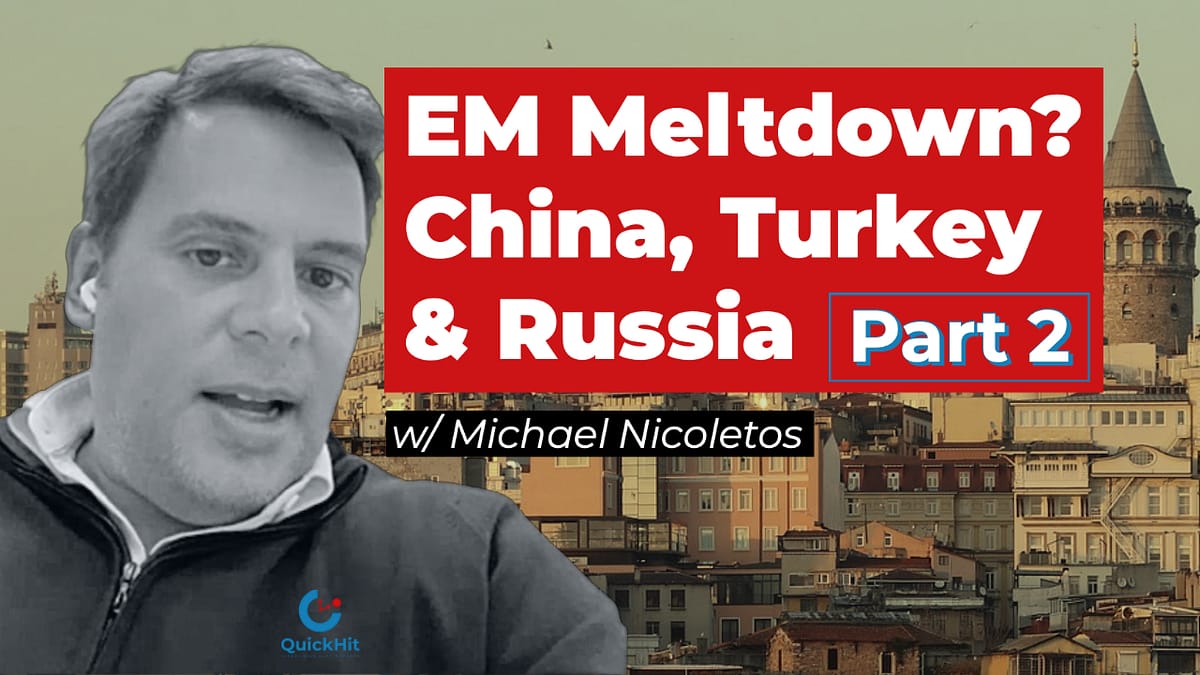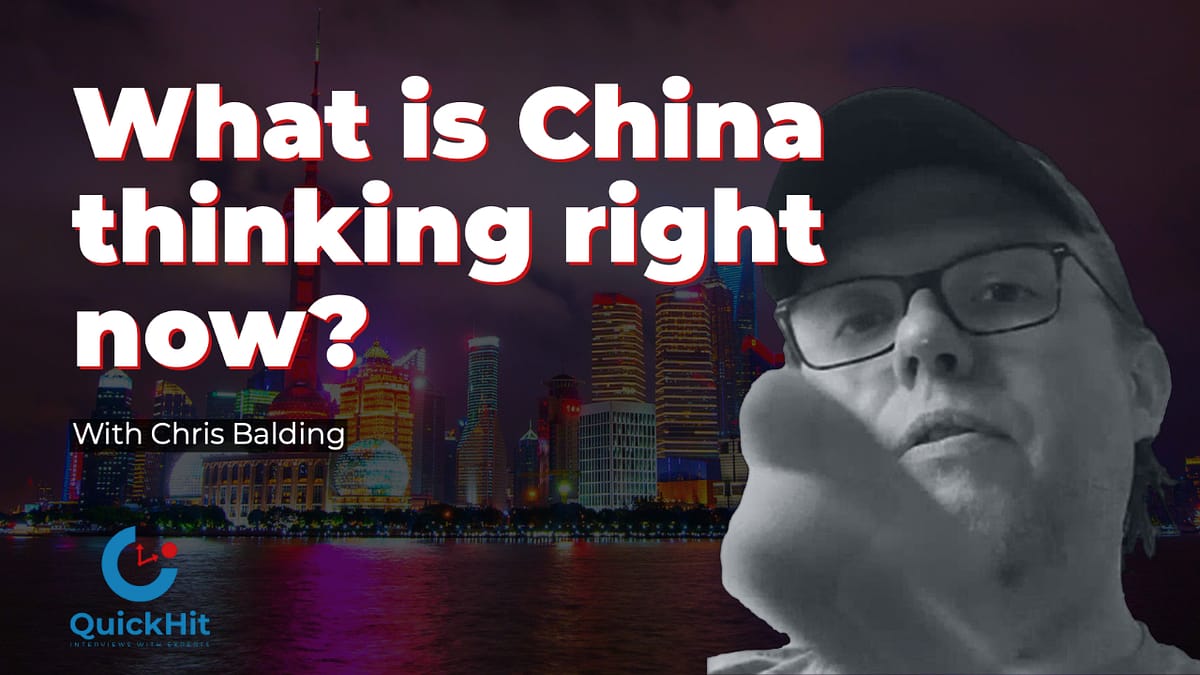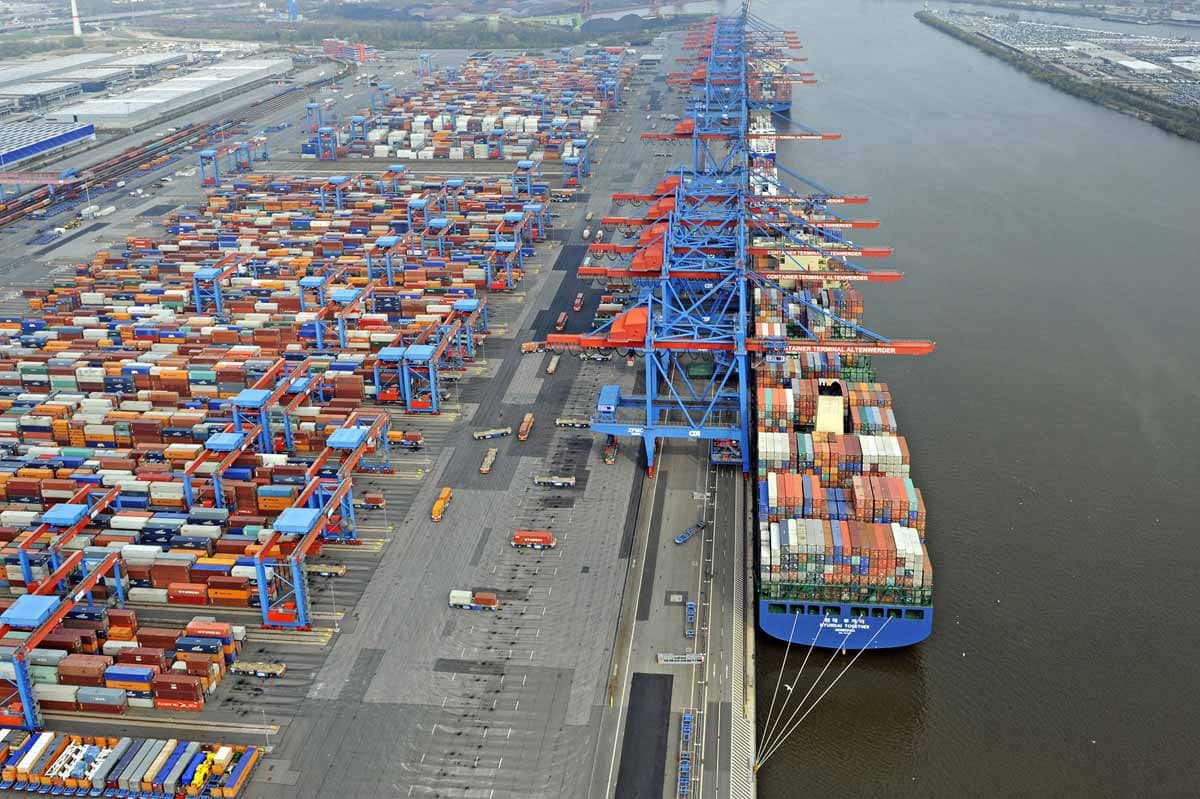Get 94.7% accuracy on your markets forecasts with CI Futures. Subscribe for only $50/mo for a limited-time only: http://completeintel.com/2022Promo
In this QuickHit episode, we’re joined by Mike Green to talk about what will happen if China invades Taiwan? We’re not saying that China is going to invade Taiwan, but what if it is to happen? What will be the impact to markets?
Mike Green is the chief strategist and portfolio manager for an ETF firm called Simplify Asset Management. They specialize in derivative overlays and derivative structures that modify the traditional market exposures. Their flagship products are things like US equities with downside protection.
His background prior to Simplify, has been in hedge funds for about 15 years and have built an expertise or a degree of renowned for the work that he does in primarily the derivatives and volatility space and have managed traditionally in what’s referred to as a discretionary global macro style. The assets that he purchases or that he monitors exist around the world, including places like China, Taiwan, et cetera.
A lot of the discussions Tony and Mike have had around Taiwan are tied to some geopolitical observations and some dynamics that exist in which Mike played a role less under the Biden administration. But in the prior administration had an advisory capacity to some components of the Department of State and Department of Defense.
📊 Forward-looking companies become more profitable with Complete Intelligence. The only fully automated and globally integrated AI platform for smarter cost and revenue planning. Book a demo here.
📈 Check out the CI Futures platform to forecast currencies, commodities, and equity indices
This QuickHit episode was recorded on December 2, 2021.
The views and opinions expressed in this What happens to markets if China invades Taiwan? Quickhit episode are those of the guest and do not necessarily reflect the official policy or position of Complete Intelligence. Any contents provided by our guest are of their opinion and are not intended to malign any political party, religion, ethnic group, club, organization, company, individual or anyone or anything.
Show Notes
TN: So today we hear or any day, pick a day. We hear that China is invading Taiwan. What are the first things that come to your mind as the news crosses the wires?
MG: Well, I think there’s a couple of things that are really important about the question of is China invading Taiwan, right. And so what we have seen very clearly, and this is fact, not speculation, is a dramatic escalation of China’s incursion on what would traditionally be thought of as Taiwan sovereignty or independence. Right.
We’ve seen a dramatic increase in boats transitioning across the international marine borders. We have seen a dramatic increase in incursion of both fighter jets and bombers into Taiwanese airspace. And in general, the strategy that you see China engaged in is what is typically thought of as a precursor to an invasion. They’re effectively forcing Taiwan to maintain alertness and readiness, which slowly degrades the quality of defenses.
If you have to constantly scramble jets, there’s only so many hours that you can actually have them in the air. There’s only so many hours you can have pilots operating before their capability deteriorates. That is very clearly what is in play here.
Now, it’s an unknown question whether they go to the next step, whether they take what is currently a largely psychological and relative resource advantage to degrade Taiwan’s capabilities, whether they turn that kinetic as compared to hoping for a psychological collapse where Taiwan effectively decides to sue for the best possible deal they can get is unclear.
And I think that’s really what we’re all debating. I mean, China has come out very clearly. Others have made this observation, and it’s not dissimilar to my former employer, Peter Thiel’s observation about Donald Trump, right. That everyone takes him literally, but not seriously. I would flip that on its head. And everyone say everyone takes Xi seriously, but not literally when he says we will reunify with Taiwan in one form or another within the next five years.
And that’s the core of the question. Are they going to do this in a peaceful fashion? Are they going to do it in a kinetic military fashion? What are the ramifications of each of those two strategies and what’s the state of gameplay that is in place right now, as each side including the allies of Taiwan in the form of Japan, the United States, et cetera, evaluates how they want to respond to it.
TN: Right. What is that? What are those initial responses that you think happen, setting aside battle plans, of course. Honestly, I don’t believe that Min Def or DoD know 100% of whether this will happen or not. I think everything is a potential.
What do you think those reactions are initially in terms of, say, markets, investments, even things like trade? Those are like, what do you think happens right away?
MG: Well, I think there’s a couple of things that are worth hitting on. Right. So the first is why does China want Taiwan or why does it matter? Right. So one component is just the psychological final victory over the Republic, the Taiwanese Republic, what is known as the Republic of China outside of the area.
When you think about that dynamic, this is a final victory that would allow Xi to place himself permanently on par with the founders of the Chinese Communist state. Right. The Mao’s, et cetera, of the world. So this is a huge accomplishment.
I think there’s a huge misunderstanding that the objective is to obtain the semiconductor resources, right. To me that feels, one, extremely unlikely to expect that they could do that successfully, and two, I’m not sure it’s actually entirely relevant. Right. But that does then speak to the indications that the game is being taken much more seriously.
And so one of the things that I would point to people is the dramatic expansion of capabilities and investment that Taiwan is making in Arizona, where they’ve effectively doubled on a nameplate capacity and potentially up to 5x the capacity of TSMC in Taiwan. Now, that’s a huge implication.
If we were to put ourselves back into the 17th century, it would be the akin of a European sovereign entity, a small Principality, taking the Crown jewels and shipping them for safekeeping somewhere further away when they were faced with a threat, taking the error apparent and shipping them abroad so that there’s a base of operations. If you think about TSMC’s investment in Arizona, that can be very easily thought of as a base of operations and a source of income for a government in exile. Right. So I don’t think Taiwan is planning on going away.
It also opens up kind of the interesting angle of how effective is China’s strategy, because I think that China broadly looks at it and says, we can wear them down and I would point to it and say, yeah, your best opportunity was actually probably a year ago to use the element of surprise. Now you’ve pretty well telegraphed it. Taiwan has made significant advances. The US Department of Defense, in particular, I would argue, would have been caught very much off guard a year to a year and a half ago. Today they’re pretty much on top of this, right.
The Pacific Theater has been opened pretty widely. You’re actively hearing expressions of support from South Korea, Japan, et cetera. So to me, it feels like the element of surprise has been lost, and now it just becomes a question of, is this ultimately going to happen? It seems extremely unlikely to me that it will be a long term successful component.
Then you have to ask yourself the last question, which is, why does China care beyond simply the moral victory or the desire for that? And that’s where you and I have been through these maps. And I don’t know if we’re doing this in a visual format, but I could share it if you wanted to.
The way the world looks at China is not the way China looks at itself. Right. So the traditional map that we think of with China when we look at it, we see this large access into the Philippines and in the Pacific Ocean. It looks like China has a coastline that is similar to the rest of the similar to the other great powers like the United States. The reality is that their entire access to the Pacific Ocean is framed and blocked by barrier Islands, Taiwan being the most prominent of those. Japan to the north, being another equally important one. The Philippines come into play. Okinawa comes into play there, et cetera. Right. What they’re really trying to do in terms of expressing a desire to take over Taiwan is to break into the Pacific Ocean and pick up that Deepwater Navy capability that is absolutely mandatory for an “Empire to express power.”

So I think we’re at kind of a point of maximum uncertainty where it feels like they may have missed the best opportunity to do so. But as you and I have talked about, I’m not sure that China is actually as good at this game as everybody thinks.
TN: I’m with you on that. Yeah, I don’t think they are, either. And one of the things that I’m seeing more and more of two years ago, a year and a half ago, as you mentioned, China was winning diplomatically, not everything. But there was more of a positive bias toward China.
Today, they’re just annoying people. And so if they take an action like that, it seems like they start from a negative position, and it’s hard for them to get to a positive position out of that when Xi Jinping was going to the left to talk and all this other stuff, he had a lot of positive momentum behind him, and he actually could have done a lot of really terrible things, which, if you look at what’s happening in Xinjiang and other things, he did a lot of terrible things. He could have done more, actually. And I think the world would have turned the other way. But now I think it’s really hard for them to turn the other way. Does that make sense to you?
MG: No. I actually think that’s true. I think that they may have gained a degree of false confidence off of the failure to react to Hong Kong. But absolutely, with the exception of… Australia has clearly turned. The UK has recognized that it has to turn. Europe continues to enjoy the schadenfreude of the US’s relative standing having deteriorated. I think Europe is slowly waking up to the risks of their reliance on Russia, particularly for energy supplies.
And an interesting angle, and again, you and I have talked about this offline, would be the dynamic of a simultaneous move in both directions by Russia to expand into Ukraine and China, to expand into Taiwan and the immediate aftermath of the Chinese Olympics in Beijing this winter, which is February. From a purely mechanical standpoint, it’s almost impossible to mount any form of attack on Taiwan until May due to weather conditions, and an amphibious assault would make no sense, you could certainly see an airborne one.
I think there’s a very real chance that we see at least an increase in the drumbeats associated with that to test it out. But Europe will eventually turn, right. They have to understand at their core that they are an exposed peninsula on the Eurasian continent, and they really can’t allow China and Russia to become as dominant as they are expressing at least their interest of becoming.
TN: That’s right. Okay. So you bring up an interesting analog when you mentioned Hong Kong. Okay. So Hong Kong and Taiwan used to be this kind of holdouts from the mainland, and people looked at them as these democracies-ish, although Hong Kong, whether it was a democracy or not as questionable. But the takeover of Hong Kong is one that happened.
I was telling people in 2014 that it was already done. That this was going to happen. And for five years that I talked about it, people said, no, you’re crazy. It’s not going to happen. There’s too much money that goes through Hong Kong and so on and so forth. But it happened. And now in the wake of it, people just kind of shrug their shoulders like, okay, whatever it happened. Do you think that a takeover of Taiwan would be similar? Do you think people would just kind of shrug shoulders and say, “they invaded Taiwan. It was going to happen anyway, let’s just move on.?”
MG: No, I think it’s much harder for people to look at it in that context. Now, I would frame it, if we’re going to use a World War 2 analogy. And you always got to be careful with Godwin’s law about this, but it would be the analog to Nazi invasion or the German invasion, more accurate of the Sudettan land, which ostensibly was done in a manner very similar to Russia’s invasion of Crimea and the Dunbas region, were there to protect the Russian speakers.
We’re not actually there to have any form of substantive gain, and the world has broadly moved on from it. Right. Same thing I would argue with Hong Kong. Well, of course it was ours, right? You didn’t actually expect us to sit around 2047 and wait for this. There had to be a gradual progression in that direction.
Now, if this is the definition of gradual, I’d hate to see the definition of sudden. But again, the world has largely ignored it and moved on because for the most part, those outside the region have not experienced a significant shift. And again, if you were to look at foreigners in Berlin around the invasion of Sudetenland, they wouldn’t have seen anything different either. Right. Maybe they would have seen the riding on the wall and gotten out. But as we know, many didn’t.
There’s the risk that this is similar because the reality is if China were to decide to invade Taiwan, and now we can kind of get into the market impact, I don’t think the west can do anything about it. Right. Remember, this is 100 miles, give or take off the 100 km. I’m sorry. Off the coast of China. The US cannot Mount a credible defense and certainly not the ability to take back that region once China has taken it.
And I think that’s kind of the interesting feature associated with this is that like the actions of Germany and Sudetenland or the Blitzkrieg into Paris or any of these components, it’s going to be very hard to undo this. And so the minute it happens, it becomes a much longer protracted extended dynamic. And that’s the reason we care. It’s not so much that are we going to win or lose? Right. Almost any credible analysis of it says that China can indeed take Taiwan.
Taiwan is unique and in terms of its mountainous dynamics, et cetera. It’s uniquely suited in a lot of ways for guerrilla warfare. So my guess is they will be playing an Afghanistan type dynamic for decades if they take it. And the US would certainly be working in ways to resupply that and create harassment and everything else. But it is unrealistic to think that it can be stopped if they truly decide that they’re going to do that.
And that’s kind of the thing that, to me is more interesting is that how do the pieces start to fall together in a puzzle if they were to do that and what is properly priced under those scenarios? And I think, Ironically, people will point to US equity markets and say, oh, they’re going to fall or the dollar would be affected, et cetera.
I think there’s some truth to that certainly on a short term basis. But as you know, I don’t really think that the fundamentals matter all that much in the US equity markets right now. Are Americans going to lose their jobs and stop contributing to their 401k plans? And is the Federal Reserve suddenly going to step away from markets and stop engaging in supportive activity? To me, that seems very low probability. And so while there could very well be a correction, I’d be surprised if it moved in that direction. But I do think there’s other trades that are particularly interesting. Right.
So we mentioned Hong Kong. The Hong Kong dollar has been completely unaffected, both in terms of the absolute level of the dollar and its relationship with the US dollar. In other words, they continue to trade, basically a parody with very minor exception. But also the volatility associated with that. So taking bets against that relationship have retreated to near the lowest levels in years.
TN: Sure.
MG: If China were to make a play for Taiwan, it would be almost impossible for me to imagine a scenario in which that relationship didn’t fray violently. Same thing becomes true for Japan, right. Because Japan has two separate issues. One is they are a client state of the United States, and now they are directly in the face of a kinetic war that requires them to rapidly increase their government spending and to do so under somewhat existential risk. And at the same time, they have to write off, basically the minute they do that, they have to write off all of the collateral that most of their corporates have invested in China, which has become the single largest source of their external investment. Right.
So those to me, the area across Asia feels mispriced for this risk. Even if we’re just talking about a volatility spike, it feels that that area is much more mispriced than the US equity markets, for example.
TN: Interesting. So what you say about Japanese companies riding off their investments in China with the same go you think for, say, Korean companies as well?
MG: Oh, absolutely. You’re effectively placing them in a very difficult situation for sovereign reasons and for very obvious political reasons. Those are regions: South Korea, Philippines, Japan that really can’t get on board the China train. Right. Because it creates too powerful of an entity, and one that you point out is increasingly unliked. It places too powerful of an entity in their backyard.
TN: Okay. So something like 37, we all kind of know this 37% or something of global manufactured goods are made in northeast Asia. Right.
MG: Right.
TN: And if you look at electronics, it’s a lot more than that. I don’t know the number a lot more than that. So you have a manufacturing base, and especially in electronics, you have a manufacturing location where risk all of a sudden is amped up. Okay. What does that do? I know this is kind of an obvious question, but I want to get a little bit into details. What does that do to supply chains, especially around electronics?
MG: Yeah. Well, the quick answer is obviously it throws them into chaos. Right. And the most important point on the electronics that I would make is that while China holds a fraction of the world’s IP on electronics, again, the commentary around semiconductors, they are massive in the assembly process. Right. They’re basically the assembly line or the finishing stop. And so you have a ton of semiconductors that get shipped into China and then shipped out in the form of flat panel TVs, computers, iphones, et cetera.
That would unquestionably be disrupted. Right. And it creates an interesting, there’s an interesting game theory associated with it, which is you’re effectively talking about splitting the world in two at that point in a manner that is very similar to the breakdown of the alliance between the Soviet Union and the United States following World War II. Right.
TN: Right. This is what I’m not sure a lot of people, especially in the corporate world, understand, is how acute and how distinct that break could be if this happens.
MG: Yeah. I agree with you broadly. Now, the irony, of course, is part of the reason that they can’t embrace that is that redundancy costs money.
If I’m going to build a diversified supply chain, it places me at a disadvantage to competitors that do not do so in the interim. It potentially positions me for a knockout punch for a true winning of the game. But even there, you start to have to ask yourself questions. Would it be politically feasible given the likely response in terms of price controls and everything else that would kick in? Right.
I mean, I find it highly likely that a Biden administration or a Republican administration. Remember, the price controls were instituted by Nixon, not by Johnson. When you start talking about those types of dynamics, the game theory doesn’t really support the desire to fully diversify your resources. It places you at a disadvantage to your peers in the immediate future, and the potential rewards associated with it are somewhat in doubt as well because it becomes politically unacceptable to raise prices in response to that type of event.
TN: Right. Everyone else is going to be knocked out. I’ll be knocked out, too. So there’s no advantage or disadvantage to me to have a redundant supply chain.
MG: Correct. There’s a disadvantage if it doesn’t happen, right? You’re maintaining something more expensive.
So it’s hard to look at those who would be most impacted and say that they’re behaving in an irrational way. Right. Like the game theory is actually very much. Don’t do anything. Don’t do anything. Don’t do anything. Panic.
TN: Right. Okay. So we have a lot of risk in, say, Northeast Asian markets. We have a lot of risk to the electronic supply chain. I know this may seem like a secondary consideration, but maybe it’s not. What about Europe? Does Europe just kind of stand by and watch this happen, or are they any less, say risky than any place else? Are they insulated somehow?

